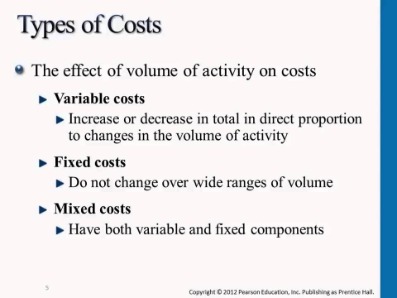Content

Cash inflow is considered a positive thing event as it means there’s more cash available for the recipient. It is an important aspect of cash flow management as it helps to ensure that a business or individual has enough cash to cover expenses and investments. To illustrate the add back of losses from disposals of noncurrent assets, assume that Rumble Corp. sold a piece of equipment for $150.
- Your suppliers won’t extend your payment dates just because you’re waiting on your accounts receivable.
- Understanding how they are different and how they work together can help you make sound financial decisions for your business.
- Other activities that impact the long-term liabilities and equity of the company are also listed in the financing activities section of the cash flow statement.
If accounts receivable (A/R) were to increase, purchases made on credit have increased and the amount owed to the company sits on the balance sheet as A/R until the customer pays in cash. As we have seen throughout the article, cash flow from operations is a great indicator of the company’s core operations. It can help an investor gauge the company’s operations and see whether the core operations are generating https://quick-bookkeeping.net/ ample money in the business. If the company is not generating money from core operations, it will cease to exist in a few years. Think of a pharma company doing strong R&D, and there is a possibility of seeing a blockbuster patented drug being launched in a few years. During this period, investors will be looking at the fact whether the company has enough cash to continue operations during this period.
What is cash flow analysis?
When you’re managing the finances for a startup, you need to approach cash flow forecasting differently. Buying property and equipment may be cheaper in the long run, but it requires more capital upfront. Even if you finance your purchase, many banks and lenders require down payments of 20% to 30%.
The price-to-cash flow (P/CF) ratio is a stock multiple that measures the value of a stock’s price relative to its operating cash flow per share. This ratio uses operating cash flow, which adds back non-cash expenses such as depreciation and Cash Inflows & Outflows Of Operations amortization to net income. Analysts look at free cash flow to understand the true cash generation capability of a business. The cash flow from operating activities section can be displayed on the cash flow statement in one of two ways.
Indirect Method vs. Direct Method
CFO is not the only measure of performance that can be used to assess a company’s financial health and performance. However, these measures can be affected by different accounting methods, assumptions, and estimates, which can distort the true picture of the company’s performance. Therefore, it is important to compare CFO with other measures, as well as with industry benchmarks and competitors, to get a comprehensive and balanced view of the company’s performance. Like all financial statements, the statement of cash flow is only designed to highlight one aspect of operational output. As a result, it is not an indication of an organization’s health from an holistic point of view, but instead a snapshot of operational success from one specific perspective.
- The journal entry to record depreciation debits an expense account and credits an accumulated depreciation account.
- Cash monitoring is needed by both individuals and businesses for financial stability.
- Having a clear picture of your cash flow enables you to make better use of available capital and minimize costly debt.
- As we mentioned, operating cash flow, to put it simply, represents the net cash an organization generates from its day-to-day business operations.

